What is Modus 100mg (Modafinil)?
In the chemical world, Modafinil is known as Diphenylmethylsulfinylacetamide. It is an FDA-approved eugeroic drug. The drug is used to treat excessive daytime sleepiness. This condition is associated with obstructive sleep apnea (OSA), narcolepsy (a sudden attack of excessive daytime sleepiness), and shift work sleep disorder (SWSD). Although the chemical industry has other drugs for this condition, such as amphetamines and methylphenidate, Modafinil is preferred by doctors as it does not cause addiction. When compared to traditional stimulants, Modafinil does not cause euphoric effects, which contributes to its lower potential for abuse and addiction.

The generic drug was developed by French neuroscientists Michel Jouvet and Lafon Laboratories in the late 1970s. However, it was released as a treatment for narcolepsy in France in the 1980s. At that time, it was called Modiodal.
Once the drug enters the body, it is rapidly absorbed. The maximum concentration in plasma is reached within 2-4 hours after oral administration. Its half-life varies between 10 and 12 hours, which is why it is sufficient to take the drug once a day. The drug is metabolized by the liver and excreted via the kidneys. The drug contains metabolites such as Modafinil acid and Modafinil sulfone, which are pharmacologically inactive. These characteristics make the drug suitable for people who need to stay awake sustainably and enjoy cognitive function without the pronounced risk of addiction seen in other stimulants.
Primary and beneficial effects
The main benefits of Modafinil include its properties that promote wakefulness and improve cognitive abilities. The drug is effective in both clinical and non-clinical settings. It is applicable to patients suffering from sleep disorders or seeking cognitive improvement.
- Improvement of wakefulness. It is the main indication of the drug. Numerous clinical studies have approved the effectiveness of Modafinil in the treatment of excessive daytime sleepiness. The drug is effective for people who have sleep problems due to shift work or suffer from OSA or narcolepsy. According to the Maintenance of Wakefulness Test (MWT), the generic drug improves average sleep latency, as well as reducing the frequency and severity of sleep attacks.
- Cognitive improvement. The pharmaceutical product shows high efficacy in improving various aspects of cognitive function. In particular, it improves memory, attention and executive functions. In 2003, Turner et al. conducted a study, during which a significant improvement in performance was observed. Patients performed tasks that required working memory, sustained attention, and spatial planning. However, note that even healthy individuals can take the drug to improve their performance and cognitive abilities. Therefore, students and professionals also use the drug widely.
- Mood stabilization. Some studies have found that the drug can cause mood-stabilizing effects in individuals suffering from depression. In 2007, Fava et al. conducted research, during which the drug demonstrated significant improvements in depressive symptoms in patients with major depressive disorder (MDD). The component proved to be effective while other selective serotonin reuptake inhibitors (SSRIs) did not work. However, the drug is used as an additional treatment and is added to an overall therapy.
- Physical performance. According to the latest results, the drug can improve physical performance and endurance. This effect makes Modafinil suitable for bodybuilders and athletes. Jacobs et al. studied its effects on physical performance after sleep. He found a reduction in perceived effort during exercises, which allowed him to conclude that the drug contributes to the release of energy.
Mechanism of action
The drug causes a versatile action, affecting different neural pathways and neurotransmitter systems. To understand its mechanisms of action, we should delve deeper into its effect on various brain regions and explore neurotransmitter dynamics.
- Dopamine pathways. Modafinil significantly affects the dopaminergic system. The drug hinders the dopamine transporter (DAT), which helps prevent the reuptake of dopamine into presynaptic neurons. This action causes an increase in the extracellular level of dopamine in the brain areas responsible for cognition, attention and motivation. Volkow studied modafinil’s effect on the brain using positron emission tomography (PET) imaging. He found that modafinil does not cause euphoric effects like other traditional stimulants (such as amphetamines or cocaine) do. This peculiarity of the drug contributes to its wide use to promote wakefulness and improve cognitive properties.

- Histaminergic system.
Modafinil acts on the central histaminergic system by activating its mechanisms. The system is responsible for maintaining human wakefulness. It acts through histamine neurons found primarily in the tuberomammillary nucleus (TMN) of the hypothalamus. Neurons are spread across different areas of the brain, which influences various aspects of arousal and alertness. Consumption of modafinil increases histamine release in the TMN. The drug stimulates a high amount of histamine in the body, which helps to stay awake and resist daytime sleepiness. Furthermore, while researching the drug, chemists found that the cognitive benefits observed when using modafinil are similar to the sleep-wake cycle modulated by the histaminergic system.
- Orexinergic neurons.
Modafinil interacts with orexinergic neurons (hypocretin), which is one of the main characteristics of its action. Orexinergic neurons are located in the lateral part of the hypothalamus. They play a crucial role in keeping the body awake and regulating the sleep-wake cycle. Penetrating into the body, modafinil causes an activating effect on these neurons, which results in an increase in the rate of release of the orexin peptide. Furthermore, peptides stimulate different areas of the brain, which are responsible for keeping the body awake during the day.
Adrenergic and serotoninergic systems
The drug also acts on these systems, contributing to the overall amount of energy for the day and improving mood.
Adrenergic system. Under the impact of Modafinil, an increased amount of norepinephrine is released in the brain. Norepinephrine is a critical neurotransmitter involved in processes such as arousal, attention, and the stress response. By acting on the activity of these neurotransmitters, Modafinil helps to achieve higher indicators of concentration and cognitive performance.
Serotonergic system. Modafinil also affects the level of serotonin in the body. Serotonin (5-HT) is a significant neurotransmitter that regulates sleep, mood, and anxiety. The components of the drug increase the level of serotonin in different areas of the brain that are responsible for mood regulation.
Glutamatergic and GABAergic systems
The latest studies highlight the beneficial effect of the drug on glutamate and GABA. These neurotransmitters are responsible for reactions such as excitation and inhibition.
Glutamatergic system. Modafinil increases glutamate release in regions involved in arousal and memory. Increased activity of this neurotransmitter contributes to enhanced cortical arousal and improved cognitive function.
GABAergic system. As for GABA, Modafinil reduces its production in the brain. GABA (gamma-aminobutyric acid) is the main neurotransmitter responsible for inhibition. Reducing its release leads to an increase in the excitability and excitability of neurons. By reducing the activity of this neurotransmitter, the drug prolongs wakefulness and relieves sleep disorders.
Hypothalamic-pituitary-adrenal (HPA) axis. This axis regulates the body’s ability to respond to stress. Modafinil has a modulating effect, which allows consumers to improve stress resistance and improve cognitive performance under stressful conditions. This feature is particularly relevant for patients who need to maintain high performance during stressors.
Cerebral blood flow and metabolism. Modafinil also affects blood flow to the brain. According to studies, the drug increases regional cerebral blood flow (rCBF) in brain areas responsible for cognitive processing.
Uses
The main use of Modafinil is related to sleep disorders. However, the unique pharmacological profile of the drug has extended its scope of application to other areas as well. Here, we discuss the most popular cases of application of the drug.
- Narcolepsy. It is a chronic sleep disorder characterized by excessive daytime sleepiness. Other serious side effects of this disorder include sleep paralysis, cataplexy, and hypnagogic hallucinations. In this case, Modafinil presents itself as one of the most effective treatments for patients with this diagnosis. Regular intake of the drug improves quality of life and daily performance. In 2007, Hirshkowitz and Black conducted research that lasted 12 weeks. An open-label study demonstrated the beneficial effect of Modafinil on patients and significant improvements in sleep latency and overall alertness.
- Obstructive sleep apnea (OSA). Patients with this condition use the drug as an additional treatment in addition to regular therapy to reduce residual drowsiness. Numerous studies have demonstrated the effectiveness of the drug in improving cognitive and functional performance.
- Shift work-related sleep disorder. People who work non-traditional hours typically experience a misalignment of their circadian rhythms. This inconvenience leads to severe sleep problems as they feel sleepy during waking hours while suffering from insomnia during scheduled sleep times. Modafinil has shown a positive effect on the daily performance of shift workers, reducing the negative impact of irregular working hours on their health and productivity.
Off-label uses
In addition to targeted disorders, the drug can be used off-label for several purposes. These include the following cases:
- Cognitive enhancement. As a neuro-enhancer, Modafinil can improve memory, concentration and productivity

 Graphs show the effects of placebo and modafinil on task performance at different levels of difficulty. Patients who took a placebo demonstrated stable performance during tasks of low level of difficulty, while slight declines were observed for tasks of medium and high difficulty. It is especially relevant if we touch on tasks with higher baseline performance. Modafinil shows moderate improvements for tasks of low level of difficulty while leading to significant declines in tasks of medium and high difficulty. This suggests that the drug is useful in simpler tasks but its effectiveness decreases as the complexity of the task increases.
Graphs show the effects of placebo and modafinil on task performance at different levels of difficulty. Patients who took a placebo demonstrated stable performance during tasks of low level of difficulty, while slight declines were observed for tasks of medium and high difficulty. It is especially relevant if we touch on tasks with higher baseline performance. Modafinil shows moderate improvements for tasks of low level of difficulty while leading to significant declines in tasks of medium and high difficulty. This suggests that the drug is useful in simpler tasks but its effectiveness decreases as the complexity of the task increases. - Attention-deficit/hyperactivity disorder (ADHD). In these cases, Modafinil presents itself as an alternative to traditional medical stimulants such as amphetamines and methylphenidate. Recent studies suggest that the drug reduces hyperactivity and improves attention in ADHD patients.
 In the graph, you can see how placebo and Modafinil affect episodic memory performance at various levels of difficulty. To illustrate the difference, the Paired Associates Learning (PAL) test was used.
In the graph, you can see how placebo and Modafinil affect episodic memory performance at various levels of difficulty. To illustrate the difference, the Paired Associates Learning (PAL) test was used.
Chart on the left. Adjusted total errors are plotted for tasks with 6, 8, 10, and 12 shapes. Modafinil users make fewer errors than patients taking a placebo. This trend becomes more evident as the difficulty of the task increases. ANOVA measures are used to check baseline performance. They demonstrate a significant main effect of Modafinil (F = 6.199, p = 0.01, ηp² = 0.10).
Graph on the right. If you look at the hardest level (marked with 12 shapes), Modafinil leads to significantly lower errors than placebo (F = 4.211, p = 0.02, ηp² = 0.13).
Overall, the result of this research suggests that Modafinil significantly improves episodic memory performance, particularly in more demanding tasks.
- Depression. When combined with traditional antidepressants, Modafinil is used as part of complex therapy for major depressive disorder. The drug has demonstrated high effectiveness in relieving depressive symptoms.
- Cocaine addiction. Nowadays, investigations are being conducted into the possible beneficial effects of Modafinil in the treatment of cocaine addiction. The possible benefits are explained by several reasons related to the biochemical mechanism involving both drugs. Recent observations note that Modafinil partially reverses cocaine withdrawal symptoms. According to these studies, cocaine-dependent patients taking Modafinil can go several consecutive days without using cocaine. However, no statistically significant effect was found on the rate of change in percent cocaine-free days.
- Weight loss. Investigations have found that the drug causes appetite suppression and weight loss. These signs have been observed even in healthy individuals without extra pounds. The Medline database maintains records of all studies conducted in this domain. They demonstrate that patients taking Modafinil experience weight loss compared to a placebo group. Thus, a study conducted in 2008 showed that individuals consume 18% fewer calories per day when taking Modafinil 200 mg, while taking 400 mg tablets reduces calorie consumption by 38%.
Dosage, administration and precautions
The bioavailability of Modafinil is greater than 80%. The maximum concentration of the component in the body is recorded in 2-4 hours after administration. If the pills are taken with meals, food can slow the absorption of the ingredients. However, it does not affect the overall area under the concentration-time curve. The half-life usually varies from 10 to 15 hours; may vary based on cytochrome P450 enzyme genotype, as well as liver and kidney function.

Dosage
Hypersomnia associated with narcolepsy and OSA: it is recommended to take a single dose of 200 mg in the morning. However, some research suggests that dosing 200 mg twice daily (in the morning and at noon) is more effective. Please note that taking a single dose of 400 mg does not result in a significant increase in efficacy compared to Modafinil 200 mg.
Drowsiness associated with shift work: It is recommended to take 200 mg of Modafinil once daily 1 hour before the shift. Even a single dose of 300 mg demonstrates high efficacy. However, individuals who have high sensitivity to the components of the drug can experience a significant effect even with a dose of 100 mg.
In any case, the daily dose should not exceed 400 mg, regardless of the disorder, its severity and other factors. Taking the drug in the second half of the day is not recommended as Modafinil is slowly excreted from the body. Since the half-life is 12-15, taking the drug in the second half of the day can cause sleep problems at night.
It is recommended to start taking the drug with a single dose of 50-100 mg, gradually increasing it to 200 mg or more until the desired effect becomes noticeable.
Administration
You can take the medicine both with and without food. However, please note that if you take the drug with food, the onset of its effect is slightly delayed due to slower absorption. It is essential to maintain consistent administration times to maintain the optimal plasma level and optimize its therapeutic benefits.
Frequency of intake
The cognitive enhancer is designed for daily administration. It is a prescription drug typically designed for conditions such as narcolepsy, sleep apnea, ADHD, and multiple sclerosis.
Improvement of productivity
If you want to increase productivity, you need to take it regularly 2-4 times a week.
If you want to take the drug as a “rescue aid” for urgent tasks, occasional intakes 1-2 times a month are sufficient.
Frequency adjustment
It is recommended to start with a lower frequency (for example, once a week) and gradually increase the dosage based on your body’s response.
Remember to monitor cognitive performance and side effects.
Possible consequences
If you take Modafinil pills daily, the components of the drug are present in the body continuously. Be sure to avoid alcohol and cigarettes.
Please note that withdrawal symptoms may be observed when you decide to stop daily use.
If you notice side effects, you need to adjust the frequency of intake and dosage.
Good practices
Use modafinil only when necessary to improve cognitive function.
Assess your needs regularly and adjust the frequency of intake to avoid addiction.
Precautions
Patients suffering from cardiovascular problems such as hypertension, angina or arrhythmias should use the drug with caution due to potential cardiovascular side effects. Since Modafinil is metabolized by the liver, users should regularly monitor its function.
Side effects
Modafinil is generally well tolerated, but like all drugs, it can cause side effects. These side effects can range from mild to severe.
Common side effects
- Headache. Most patients report headaches, ranging from mild to severe.
- Nausea. Mild forms are common. However, you can reduce this side effect if you take Modafinil with food.
- Nervousness. Increased anxiety or agitation is observed. Especially when patients take higher doses.
- Dizziness. Many consumers feel dizzy or unstable.
- Insomnia. If patients take Modafinil 100 mg late at night, they may have problems sleeping at night.
- Dry mouth. Consumers experience an unpleasant dryness in the mouth.
- Diarrhea. Gastrointestinal disorders and loose stools are frequently reported.
- Decreased appetite. Patients usually have a reduced desire to eat, leading to potential weight loss.
- Back pain. Quite frequently, consumers report mild to moderate back discomfort.
Rare side effects
- Serious skin reactions, including Stevens-Johnson syndrome (SJS) and toxic epidermal necrolysis (TEN). If you notice such side effects, you should react immediately as they can be life-threatening.
- Psychiatric symptoms, such as hallucinations, mania, depression, and suicidal thoughts. Such conditions are common in patients with a history of psychiatric disorders.
- Chest pain. It can be a possible sign of cardiovascular problems, which is why it requires immediate medical evaluation.
- Palpitations (rapid or irregular heartbeats).
- Shortness of breath. It involves difficulty breathing and may indicate a serious condition.
- Liver problems, including symptoms such as dark urine, jaundice (yellowing of the skin or eyes), and persistent nausea/vomiting.
- Severe allergic reactions, including symptoms such as rash, itching/swelling (especially of the face/tongue/throat), severe dizziness, and difficulty breathing.
Storage
- Temperature. Consumers should store Modafinil at room temperature, between 20 and 25°C (68 and 77°F). Temporary excursions between 15 and 30 °C (59 and 86 °F) are permitted.
- Humidity. Store the medicine in a dry place, away from moisture. Avoid storing it in the bathroom, where humidity levels can fluctuate.
- Light. Store Modafinil in its original packaging to protect it from light, as light can degrade the drug over time.
- Security. Keep Modafinil out of reach of children and pets. Make sure the container is tightly closed to avoid accidental ingestion.
Why choose us?
Driada Medical Store is a reliable online retailer of pharmaceutical products and food supplements. We offer to buy Modafinil 100 mg online without a prescription. A large catalog of certified products is provided to prolong well-being and support health.
We are not just an online store. We are committed to creating a community of like-minded people, where all members can find answers to their questions and get professional support. Therefore, we are a reliable Modafinil store.
FAQ
Why do I feel so good on Modafinil?
Modafinil improves mood and reduces tiredness, and has a similar effect to amphetamines or cocaine, but is not addictive.
Is Modafinil a drug for ADHD?
It has been approved that the drug reduces hyperactivity and improves attention in patients with ADHD. Thanks to this effect, it can be used as part of the complex therapy of ADHD conditions.
Is Modafinil similar to Vyvanse?
Yes, both components are similar. However, they are used for different conditions. While Modafinil is primarily used to treat sleep disorders, Vyvanse is designed for ADHD.
How long will Modafinil keep you awake?
The effect lasts 12-15 hours until the component is expelled from the body.




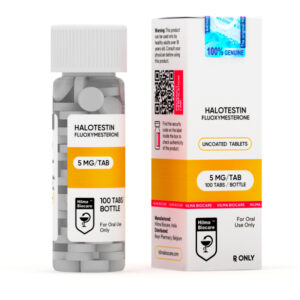
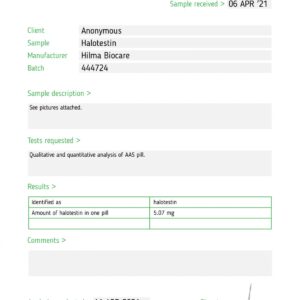
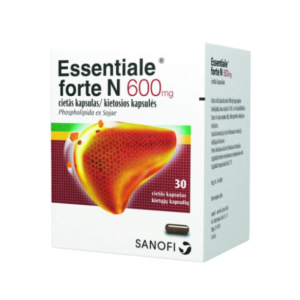

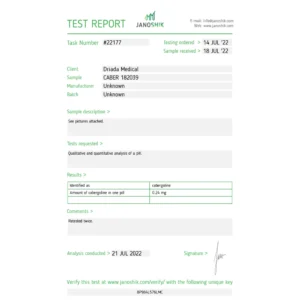
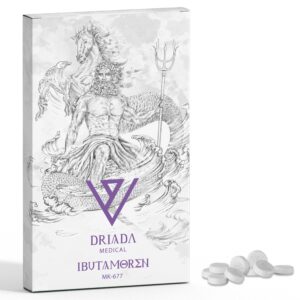
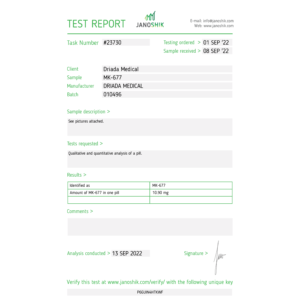
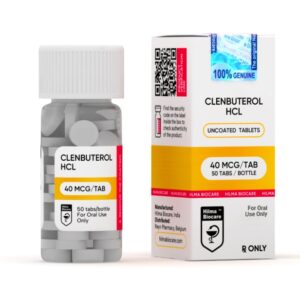

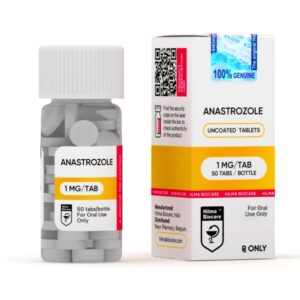

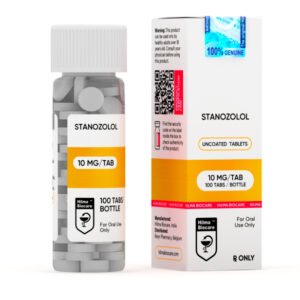
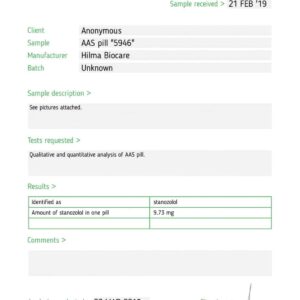
Reviews
There are no reviews yet.